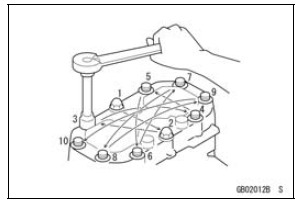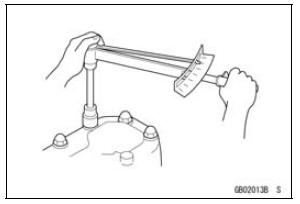

Generally, when installing a part with several bolts, nuts, or screws, start them all in their holes and tighten them to a snug fit. Then tighten them according to the specified sequence to prevent case warpage or deformation which can lead to malfunction. Conversely when loosening the bolts, nuts, or screws, first loosen all of them by about a quarter turn and then remove them. If the specified tightening sequence is not indicated, tighten the fasteners alternating diagonally.

Tightening Torque
Incorrect torque applied to a bolt, nut, or screw may lead to serious damage. Tighten fasteners to the specified torque using a good quality torque wrench.

 Replacement Parts
Replacement Parts Force
ForceGear Position Switch Output Voltage Inspection
NOTE
Be sure the battery is fully charged.
Turn the ignition switch to OFF.
Remove the fuel tank (see Fuel Tank Removal in the Fuel
System (DFI) chapter).
Disconnect the sidestand switch/gear position switch lead
connector [A].
Connect the measuring adapter [A] between the ...
Starter Clutch Assembly
Install the one-way clutch [A] to the driven gear.
Face the circlip side of the one-way clutch to inside.
Install the new snap ring [B] to the one-way clutch.
Install the drive gear [C] while turn it counterclockwise [D].
Apply molybdenum disulfide oil solution to the needle
bearing ...
Coolant Level Inspection
Situate the motorcycle so that it is
perpendicular to the ground.
Check the coolant level through the
coolant level gauge on the reserve
tank located to the left of the engine.
The coolant level should be between
the “F” (Full) and “L” (Low) level lines.
A. Reserve Ta ...